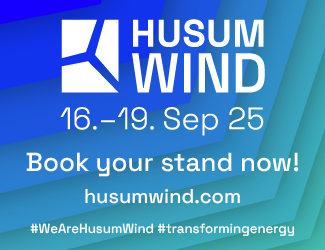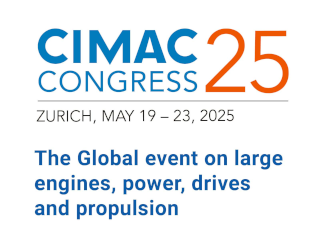The global container ship market remains tight on supply, with smaller vessel classes finally reaping benefits, too.
The turbulences in the world politics and economy show no signs of easing. Taking global purchasing manager indices as early[ds_preview] indicators, economic activity continues to contract, not only in the Euro area but lately also in the US.
Given the muted outlook for both markets, it is no surprise that liner shipping kept facing severe financial pressures during what should have been the busiest time of the year. Spot freight rates remained under pressure during the past month, illustrated by a severe erosion in prices on the Asia/Europe route and a decline also in the transpacific trade based on the World Container Index. Yet, the pains have not been bad enough to prompt liner operators to shed capacity, hence the tonnage situation in the charter market continues to be balanced or even very tight in the larger sectors. Therefore, charter rates maintained their positive trend, notwithstanding the gloomy world economic conditions.
Looking at the New ConTex, average charter rates are up by 4.5% month-on-month – the same increase as in the previous month. The dynamics have changed a bit, though, in that it is no longer only the panamax and post-panamax classes pushing the market up. The top performer of all ConTex-type classes right now is the gearless 3,500TEU type with gains of around 11% and 15% on 24-month and 12-month periods – ahead of 4,250TEU baby panamaxes which nudged up increases of 7.6% and 11.8%. Of note, the sub-panamax classes of 2,700TEU (gearless) and 2,500TEU (geared) started to see meaningful improvements, with the thinning of tonnage supply finally reaching the smaller classes down to 2.000TEU. Rates for these types are up by 4.5-9.5% month-on-month, now exceeding 10,000$/day for standard types in Asia. »Scarcity of tonnage in whole Asia forces charterers to look at forward positions, with rates approaching the mid-10,000$ benchmark for standard designs,« as one German broker commented on the gearless 2,800TEU class. Back in August, ships in this class were still fixing at $750-1,000 less. Acccording to Alphaliner, worldwide spot availability of gearless tonnage in the 2,700-2,999TEU range tightened from 8 to 4 units since end of July.
Meanwhile, the ongoing lack of spot/prompt vessels in the largest gearless segments drove period rates for panamaxes and post-panamaxes even higher yet. Scrubber retrofits keep limiting the active fleet, ensuring full employment for all those ships available to the market. As a result, no spot ships have been recorded in the post-panamax segment for segments bigger than 4,500TEU. Rate levels for standard 8,000-9,000TEU tonnage moved higher from 30-32,000$/d into the mid 30,000’s-range. Arguably, it was the niche segment of wide-beam tonnage with typical panamax container intake (4.600-5,400TEU) that posted the steepest gains. By the middle of September, brokers reported the extension of the 4,620 TEU »RHL Calliditas« at 23,000 $/d net for 12 months by Hapag-Lloyd. This represented a jump of circa 4,000$/d from the previous benchmark fixture in this segment which was 19,250$/d for an 8-10 month period on the sister vessel »RHL Concordia« by Cosco back in August.
Dry cargo market remains strong
The dry bulk market surged higher, with the Baltic Dry Index reaching its highest level for a long time in early September. The time charter averages (5tc) for trips peaked at over 38,000$/d for 180,000 dwt capesize vessels and at near 20,000$/d for 82,500 dwt panamaxes, although they have retreated to circa 31,500 and 17,500$/d, respectively, by the time of writing. In a month-on-month comparison, daily earnings for bulkers are still higher except for panamaxes. China continues to be the driving force, as the research desk of London broker Simpson Spence Young explained that dry bulk world trade should have reached record levels during the third quarter, spurred by increases in iron ore, coal and soyabean imports in China.
»Volumes of iron ore, soybeans and grains out of Brazil were exceptionally good over the summer, driven by China building inventories and taking advantage of Brazil’s weak currency,« Clarkson Platou concurred. Smaller geared bulkers were delayed in joining the upswing, but spot earnings for them showed respectable gains over the past weeks, too. Supramaxes (58,000 dwt) registered a 6% improvement while the time charter average for smaller handies (28,000 dwt) even ticked up by more than 12%. These segments benefited from a spillover of panamax cargoes and generally firm conditions in the Atlantic on the back of strong grain business ex East Coast South America, Black Sea and US Gulf, brokers said.
Finally, the shortsea dry and breakbulk market in Europe also started so a growing seasonal uplift thanks to growing grain export business in North Europe. According to sector analysts BMTI, typical Baltic westbound freights (to ARAG) for 3,000 t loads firmed up from 18 to almost 21 €/t since August. Meanwhile the market in the North Sea is buoyed by a rush in cargo activity ex UK, as BMTI reported. »With most UK wheat ships headed toward Spain, wheat charterers are racing to close up their requirements before the Brexit deadline,« it said.
Michael Hollmann















